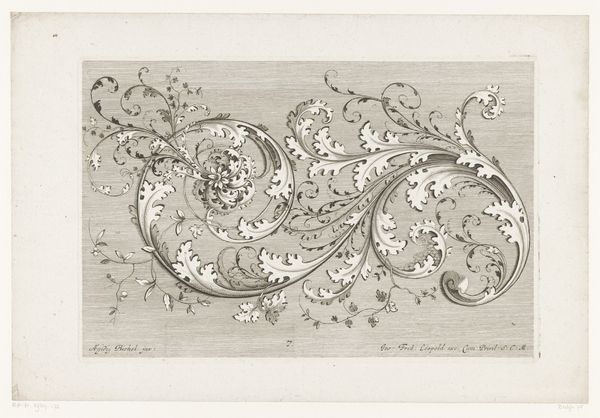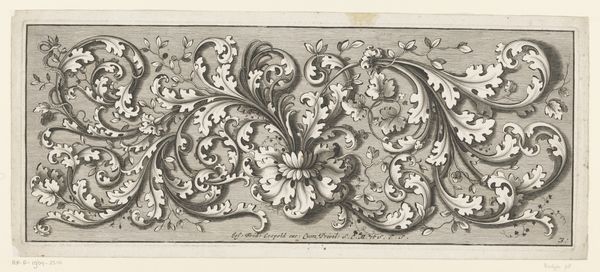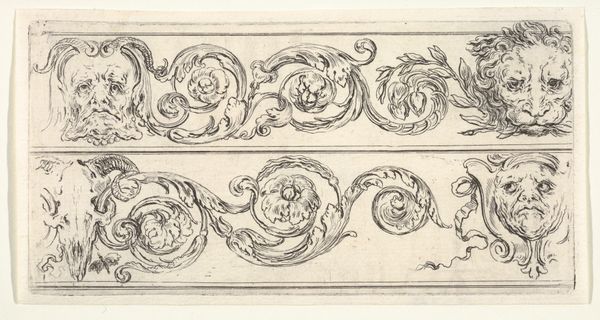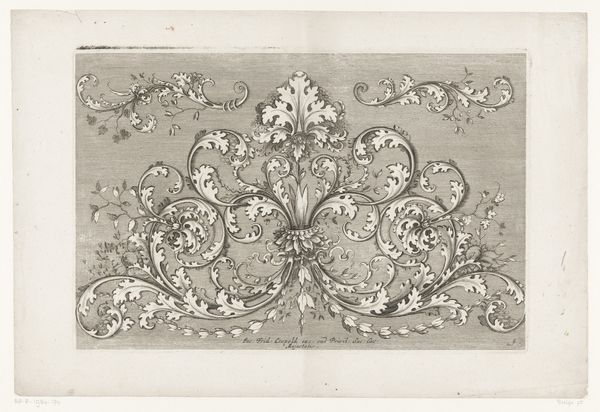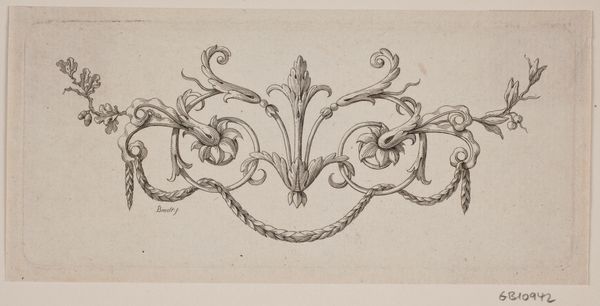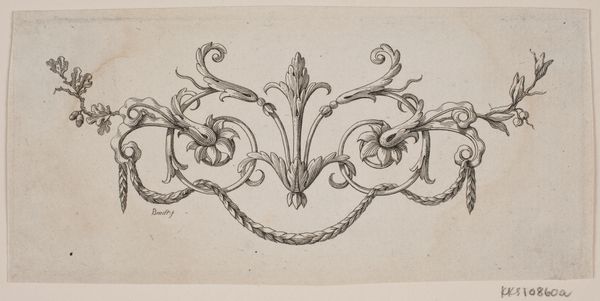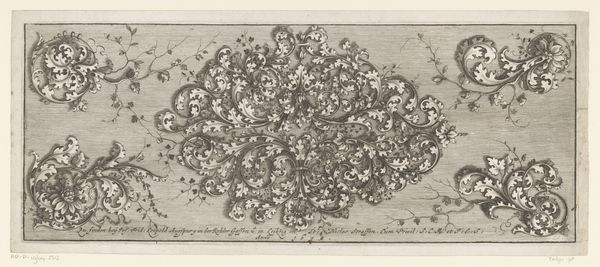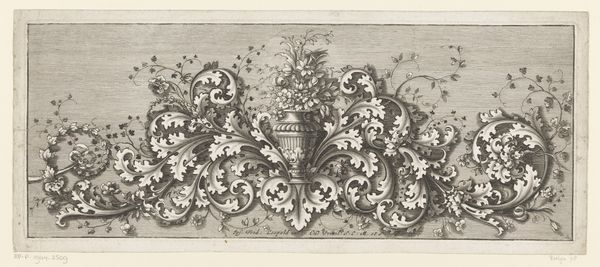
print, engraving
#
baroque
# print
#
personal sketchbook
#
geometric
#
line
#
decorative-art
#
engraving
Dimensions: height 232 mm, width 350 mm
Copyright: Rijks Museum: Open Domain
This print of acanthus tendrils was made by an anonymous artist, and is currently held in the Rijksmuseum. While we don't know who made it, or even exactly when, we can still learn a lot about the society and institutions that produced this image. Ornament like this was crucial to the visual language of power in early modern Europe. It’s a small thing, but it speaks to how art was used to convey status. The acanthus leaf motif itself has a long history, going all the way back to ancient Greece and Rome. It was revived during the Renaissance and became a popular element in architecture, furniture, and the decorative arts. Prints like this were often made to be used as models by craftsmen. They were a way of disseminating new styles and motifs, and of ensuring that the latest fashions were available to a wider audience. By studying prints like this, and by researching the social and economic contexts in which they were made, we can gain a deeper understanding of the history of art and design.
Comments
No comments
Be the first to comment and join the conversation on the ultimate creative platform.
